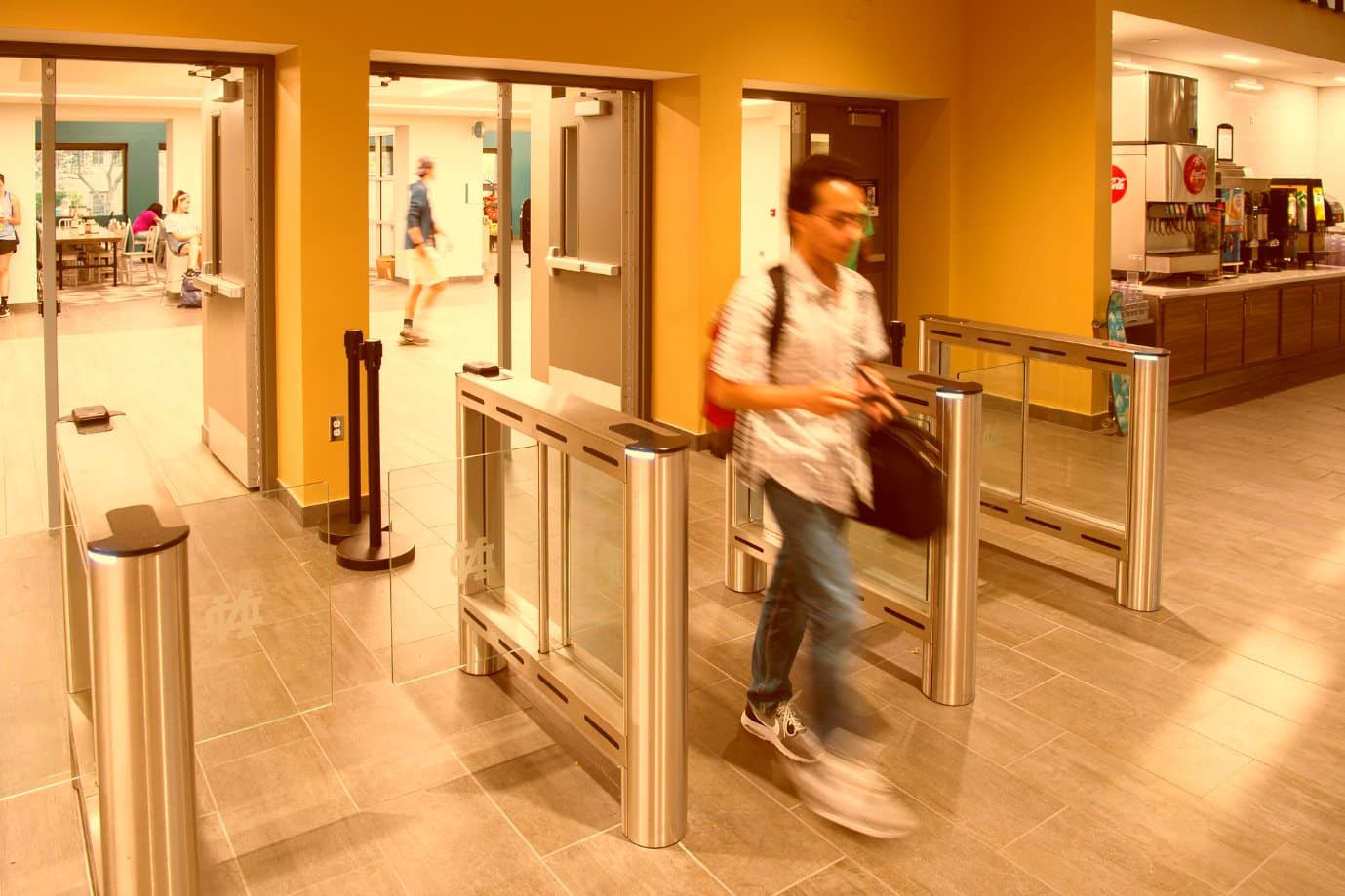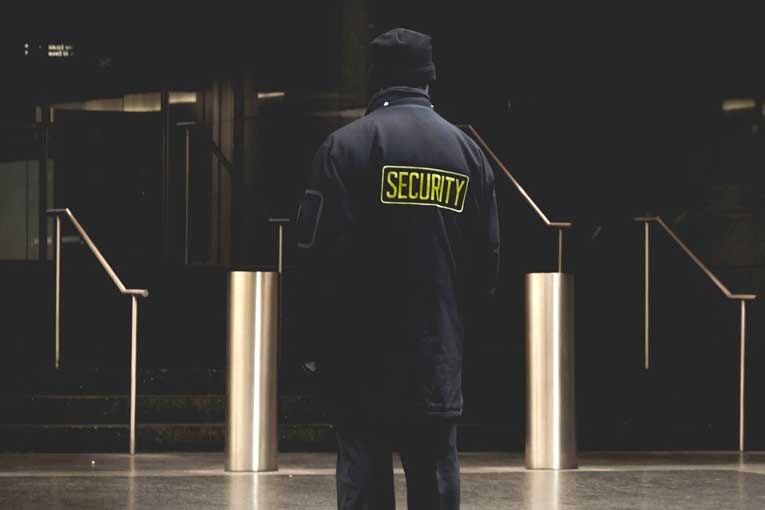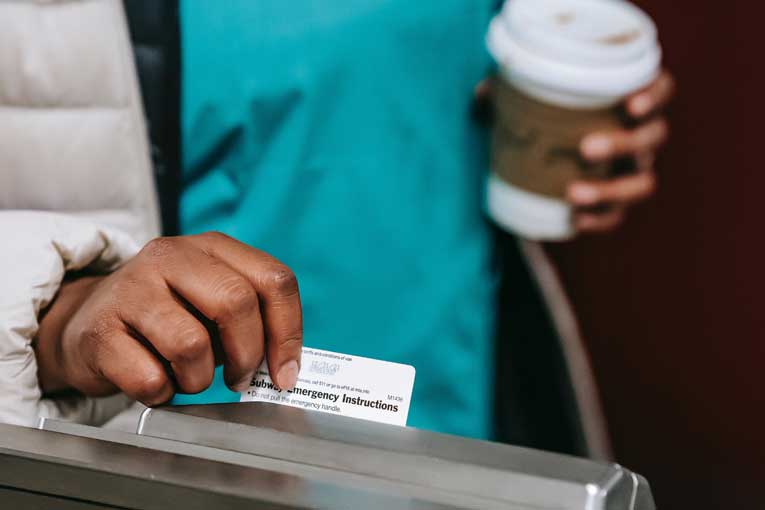Entrance Control vs Access Control – The Key Differences


James Thorpe
Share this content
Tony Smith, Major Accounts and Marketing Manager, Integrated Design Limited (IDL) explains why, when working together, entrance control and access control can be a great security team.
However, both are separate points within the access/entry process, which is explored and clarified further within this article.
Article Chapters
ToggleWhat is Entrance Control?

Imagine two security officers at the door of an event.
One checks whether your name is on the list and the other ushers you through or puts themselves in your way.
The first is performing access control and the second entrance control – access control decides and entrance control enforces.
More modern solutions involve access control software and entrance control by units such as turnstiles, with even simple authorisation involving back and forth communication between the two.
An entrant might present a fob or fingerprint to a reader mounted on a turnstile.
A signal goes from here to access control, which assesses and returns a verdict to entrance control, which will unlock a barrier or not, in response.
To make the most of these systems, they need to be integrated as fully as possible.
As an example, access control traditionally has the job of occupancy counting, tracking how many people are in each part of a building.
This data can be used in various ways, providing information to responders during emergencies, for example, or feeding into systems that adjust heat and light based on occupancy.
The problem is that access control can generate an approximation only for occupancy.
Consider the person who waves their badge at a reader, but then turns back for some forgotten item.
Access control thinks they have entered, but entrance control knows they haven’t actually pushed through, and can send back correcting information.
Tailgating & Sidegating
A recurrent security and counting problem is tailgating.
Physical barrier systems will often have an optical element also, because that is the technology that can spot two people attempting to pass after one authorisation.
Serial interruption of the light-beams will be detected, even if the barrier has not had time to close between the pair.
A scenario that is much more difficult to detect is the one sometimes known as sidegating.
Lanes that are wide enough to comfortably fit wheelchairs, including sports wheelchairs – which are wider than standard wheelchairs – this means that they are also wide enough to easily fit two pedestrians through, next to each other.
At IDL, their in-house engineers have developed technology that is capable of preventing this from happening.
The intelligent infrared matrix that drives the decision to authorise entry makes thousands of calculations per second based on speed of passage, luggage being carried or pulled, distance to the authorised pedestrian and direction of movement.
Connecting Access Control, Entrance Control & Exit

Manufacturers typically offer a variety of ways in which access control and entrance control can communicate, including standards from computer networking, such as Ethernet.
But, many customers opt for reliable, simple, direct physical wiring, at least for core signals.
Whatever the communication option, there are accepted standards for what signal means what, so any access control package ought to be able to link to any entrance control solution.
The term is entrance control, but the systems deal with departure also and must cater well for scenarios such as emergency.
If an automated system or staff member asserts an alarm state, systems would typically be programmed to permit free passage in the exit direction, while maintaining population count.
Security personnel might adjust the system in other cases, perhaps switching turnstiles to a less secure but faster mode during a busy open day.
Authorisation checking typically would continue and scenarios such as tailgating or sidegating would still be detected, with alerted guards left to deal with those events.
Fastlane at The Security Event
Fastlane is pleased to once more be exhibiting at The Security Event on stand 4/E60.
The show will see the UK debut of some of our new models, including the Glassgate 150 Plus and the Glassgate 300SL.
The 150 Plus is the larger cousin to the existing Glassgate 150; it now features a 1000mm width option and enhanced brakes.
The new Glassgate 300SL is an addition to the Glassgate 300 range, featuring slimmer pedestals, combining barrier heights of up to 1800mm with a minimalist open styled pedestal design.
Also on display will be the Door Detective Plus, which now features our innovative sidegating technology.
For more information, visit www.fastlane-turnstiles.com, telephone +44 (0)20 8890 5550 or email [email protected]
This article was originally published in the April 2023 edition of ISJ. To get your free digital copy, click here.


